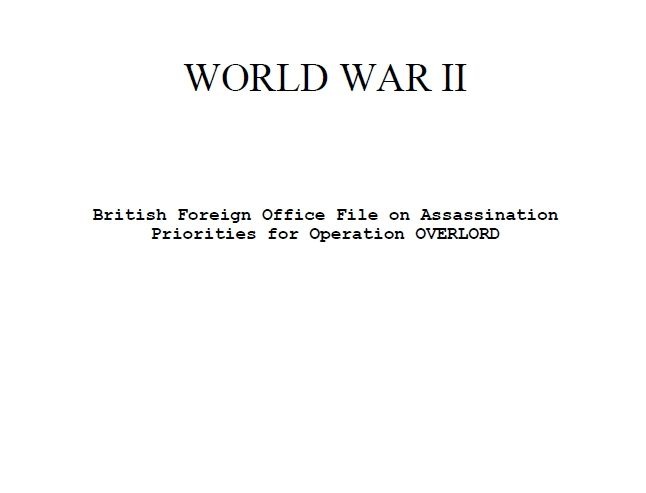
British Foreign Office File on Assassination Priorities for Operation OVERLORD
$1.90
Description
Wartime Assassination Plots and Hitler Rumors
- May 1944 (21 days before D-Day): A memo designated FO 1093/292, subject “Assassination Priorities for OVERLORD,” is initiated. It states that the Chief of Staff has requested advice on “suitable candidates to whom attention might be paid, prior to, on and after ‘D’ day,” for assassination. Initial German targets include Stulpnagel, Runstedt, and Rommel, with potential Vichy collaborators also mentioned. This memo indicates that the British Foreign Office and the Secret Intelligence Service (SIS/MI6) are considering providing a list of French and German assassination targets, likely for the Special Operations Executive (SOE) to carry out after D-Day.
- May 16, 1944: British diplomat Thomas E. Bromley writes to Charles Peake, who is attached to Supreme Headquarters Allied Expeditionary Force (SHAEF). Bromley expresses concerns about the proposed assassinations, fearing “bloody reprisals” from the Germans and British responsibility if such reprisals occur. He also notes that “past records of these attempts show” that for every successful assassination, there are “two or three failures.”
- Undated (after the initial memo, likely May 1944): “C” (Major-General Sir Stewart Menzies), the Chief of SIS, expresses his disapproval of the assassination plan, believing that removing specific Germans would have little impact on the “efficient functioning of so widespread and highly organized a machine.”
- Undated (after the initial memo, likely May 1944): Victor Cavendish-Bentinck, Chairman of the Joint Intelligence Committee, voices his opposition to the assassination idea. While not opposed “out of squeamishness,” he believes it is a “type of bright idea which in the end produces a good deal of trouble and does little good.”
- Undated (likely May/June 1944): Memos circulate within the British Foreign Office regarding a “quite fantastic” story that Adolf Hitler is living in disguise in Perpignan, France.
- Undated (likely May/June 1944): Duff Cooper, the appointed British ambassador to France, remarks that the story of Hitler in Perpignan is as “fantastic” as “the story of Hess” (referring to Rudolf Hess’s flight to Scotland).
- Undated (likely May/June 1944): “C” (Major-General Sir Stewart Menzies) confirms that reports indicate Hitler is at his headquarters, dispelling the Perpignan rumor.
- June 21, 1944: Sir Andrew Cadogan, Permanent Under-Secretary of State for Foreign Affairs, minutes on the subject of Hitler, stating, “I suppose we should bomb Hitler if we could. I would much rather catch him, but I fear that is very unlikely.”
Cast of Characters:
- Thomas E. Bromley: A British diplomat who expressed concerns to Charles Peake on May 16, 1944, about the proposed assassination program, citing fears of German reprisals and a low success rate based on past attempts.
- Sir Andrew Cadogan: Permanent Under-Secretary of State for Foreign Affairs. He minuted on June 21, 1944, about the preference for capturing Hitler over bombing him, though he considered both unlikely.
- Victor Cavendish-Bentinck: Chairman of the Joint Intelligence Committee. He was strongly opposed to the assassination plan, not due to moral qualms, but because he believed it would cause more problems than it would solve.
- Duff Cooper: Appointed British ambassador to France. He dismissed the rumor of Hitler living in disguise in Perpignan as “quite fantastic,” drawing a comparison to the “story of Hess.”
- Adolf Hitler: Leader of Nazi Germany. He is mentioned as a potential target for bombing or capture, and a rumor of him living in disguise in Perpignan, France, is discussed and dismissed.
- Major-General Sir Stewart Menzies (“C”): Chief of the Secret Intelligence Service (SIS), also known as MI6. He disliked the idea of assassinations, believing they would have little effect on the German “machine.” He also confirmed reports placing Hitler at his headquarters.
- Charles Peake: Attached to Supreme Headquarters Allied Expeditionary Force (SHAEF). He was the recipient of Thomas E. Bromley’s letter expressing concerns about the assassination plan.
- Erwin Rommel: German Field Marshal. Identified as a “likely” candidate for assassination in the initial “Assassination Priorities for OVERLORD” memo.
- Gerd von Rundstedt (Runstedt): German Field Marshal. Identified as a “likely” candidate for assassination in the initial “Assassination Priorities for OVERLORD” memo.
- Carl-Heinrich von Stülpnagel (Stulpnagel): German General. Identified as a “likely” candidate for assassination in the initial “Assassination Priorities for OVERLORD” memo.
British Foreign Office File on Assassination Priorities for Operation OVERLORD
Dated twenty-one days before the D-Day launch of Operation OVERLORD, the first memo in a file designated as FO 1093/292, has the subject “Assassination Priorities for OVERLORD,” and states, “The Chief of Staff has asked me to look into this, and to advise him about suitable candidates to whom attention might be paid, prior to, on and after ‘D’ day. On the German side Stulpnagel, Runstedt, and Rommel look likely, but there may be some Vichy collaborators whose removal from the scene would assist.”
This file contains dialogue about the possibility of the British Foreign Office and The Secret Intelligence Service (SIS), commonly known as MI6, providing a list of French and Germans who would be priorities for assassination, most likely by the Special Operations Executive (SOE), which conducted operations in occupied Europe, after the launch of Operation OVERLORD.
The British Foreign Office on consideration thought it likely to provoke bloody reprisals, and doubted its effectiveness. Writing to Charles Peake, who was attached to Supreme Headquarters Allied Expeditionary Force (SHAEF) on 16 May 1944, British diplomat Thomas E. Bromley said: “If we designate individuals to be liquidated and reprisals are taken by the Germans, we incur a measure of responsibility. Moreover, it is likely that for every successful assassination there will be two or three failures, as past records of these attempts show”.
The files show that “C” the code name for Chief of the Secret Intelligence Service (SIS), at the time Major-General Sir Stewart Menzies, did not like the idea either, saying that the removal of certain Germans would have little effect on the efficient functioning of “so widespread and highly organized a machine”. By his own words Chairman of the Joint Intelligence Committee, Victor Cavendish-Bentinck, was opposed “not out of squeamishness, as there are several people in this world whom I could kill with my own hands with a feeling of pleasure and without that action in any way spoiling my appetite,” but because it was “the type of bright idea which in the end produces a good deal of trouble and does little good.”
The file contains memos regarding a story that Adolf Hitler was living in disguise in Perpignan, France. Though this was thought to be “quite fantastic”, as the appointed British ambassador to France, Duff Cooper put it, “so was the story of Hess”. “C” indicated that that reports confirmed Hitler was at his headquarters. Permanent Under-Secretary of State for Foreign Affairs Sir Andrew Cadogan minuted on 21 June 1944: “I suppose we should bomb Hitler if we could. I would much rather catch him, but I fear that is very unlikely.”
Related products
-
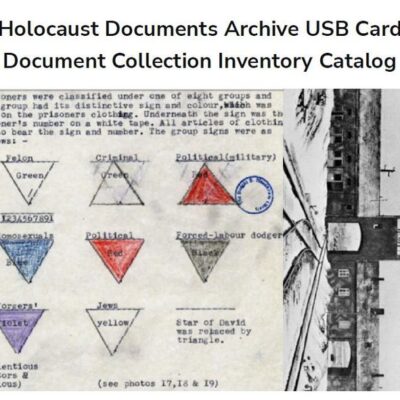
Holocaust Document Archive PDF file – Inventory Catalog of Document Collection
$3.94 Add to Cart -
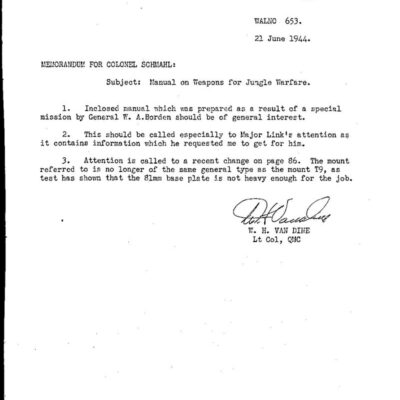
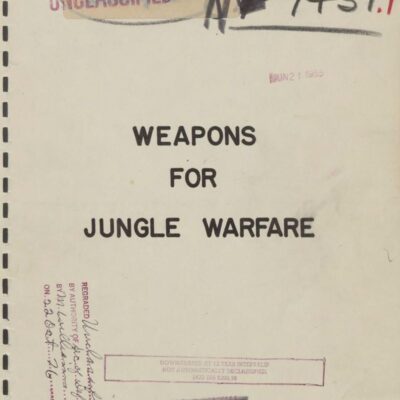
World War II Manual on Weapons for Jungle Warfare (1944)
$1.99 Add to Cart -
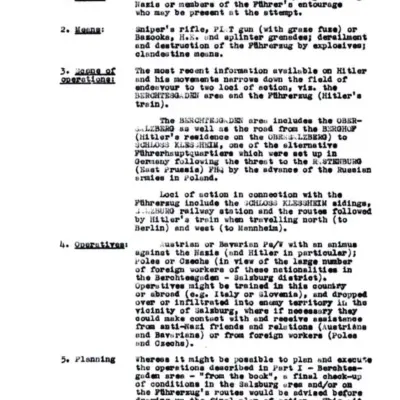
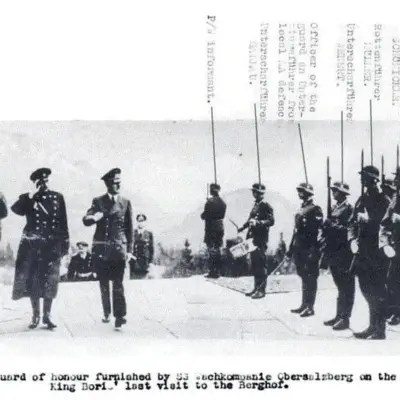
World War II: Adolf Hitler and Operation Foxley – British Assassination Plot
$19.50 Add to Cart -
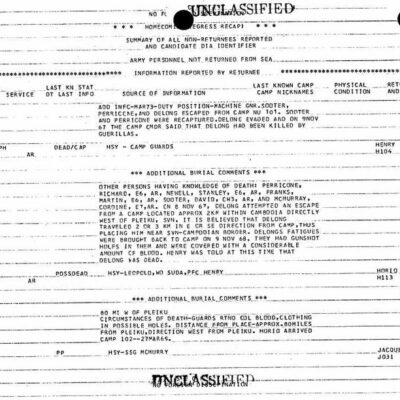
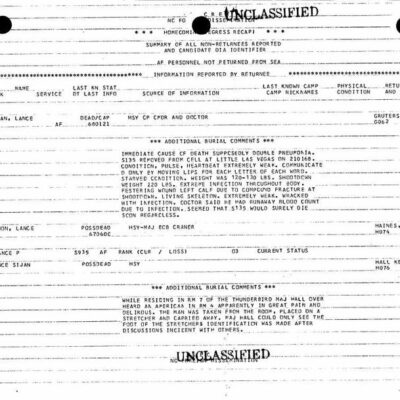
Vietnam War: POW/MIA Summary of All Reported Non-Returnees
$19.50 Add to Cart